Photos: F-35C Fighter Jet Successfully Lands on Aircraft Carrier
An F-35C Lightning II fighter jet conducted its first landing aboard an aircraft carrier on Nov. 3. The successful touchdown was considered a landmark moment for the U.S. Navy, which plans to begin operating the carrier version of the Lockheed Martin-built fighter jet at sea, beginning in 2018. Here's a look at the next-generation F-35C warplane. [Read full story on the F-35C's aircraft carrier landing]
Touchdown
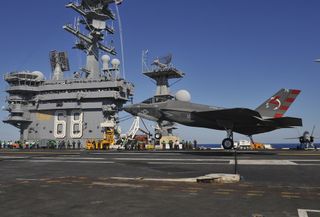
Because of the limited space for landing and takeoff aboard an aircraft carrier, pilots and carrier crew must perform special onboard maneuvers. One of these maneuvers is the arrested landing at sea, in which mechanical systems are deployed aboard the aircraft carrier's flight deck to rapidly decelerate the airplane. (Credit: U.S. Navy photo by Mass Communication Specialist 3rd Class Kelly M. Age)
Down the runway
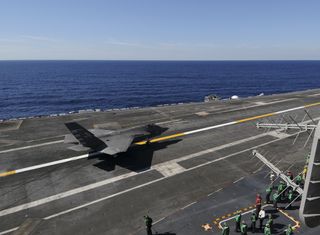
The Navy's newest fighter jet achieved its successful landing mission aboard the Navy's oldest aircraft carrier, the USS Nimitz, which is currently stationed off the coast of San Diego. (Credit: U.S. Navy photo by Mass Communication Specialist 3rd Class William Cousin)
Wheels down
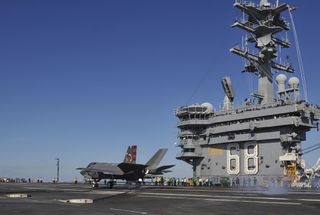
The fighter jet touches down on the aircraft carrier's flight deck. (Credit: U.S. Navy photo by Mass Communication Specialist 3rd Class Kelly M. Age)
Sign up for the Live Science daily newsletter now
Get the world’s most fascinating discoveries delivered straight to your inbox.
F-35 at sea
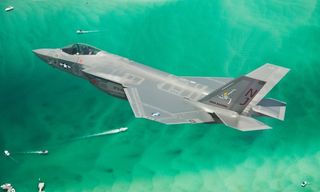
There are three variants of Lockheed Martin's F-35 Lightening II, designed for the U.S. military. The F-35C carrier variant was designed with short landings and takeoffs in mind. It also features special coatings that make it better suited to a life at sea. (Credit: Lockheed Marti)
Next-generation fighter
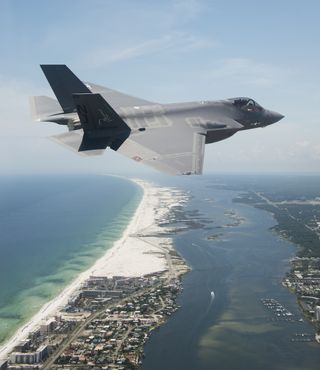
The Navy's first F-35Cs were delivered to Eglin Air Force Base, Fla., in June, 2013. The Navy hopes to deploy the aircraft in 2018 after several more rounds of testing at sea. (Credit: Lockheed Martin)
Follow us @livescience, Facebook & Google+.

Elizabeth is a former Live Science associate editor and current director of audience development at the Chamber of Commerce. She graduated with a bachelor of arts degree from George Washington University. Elizabeth has traveled throughout the Americas, studying political systems and indigenous cultures and teaching English to students of all ages.










